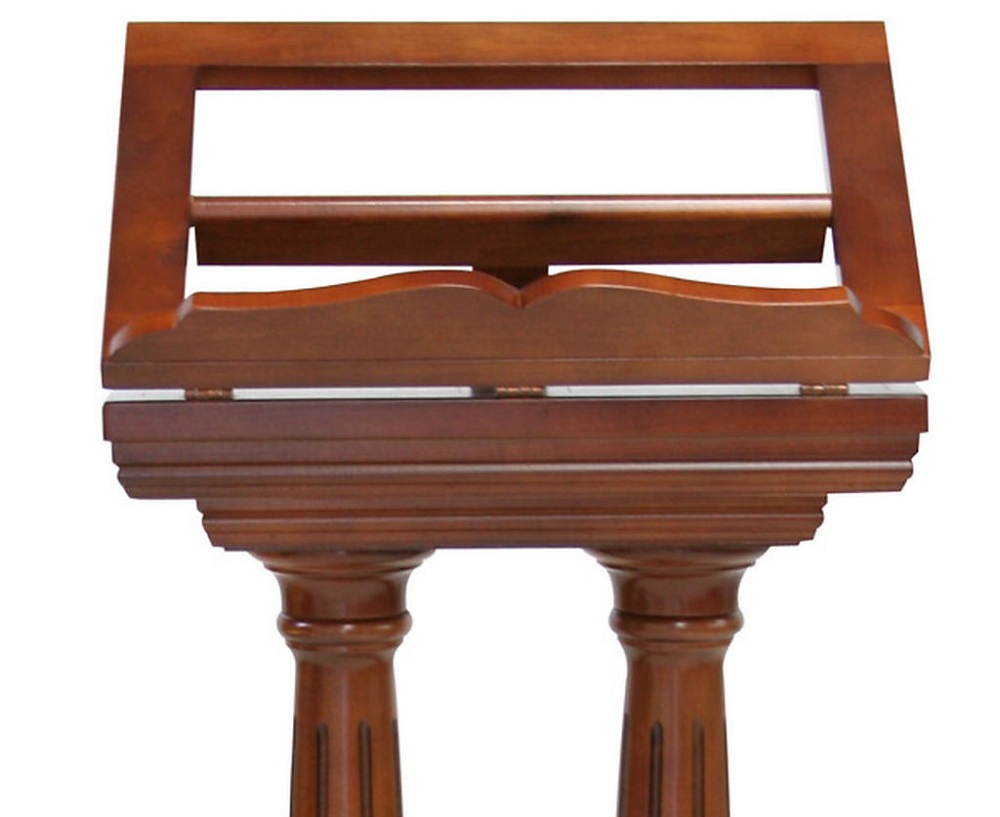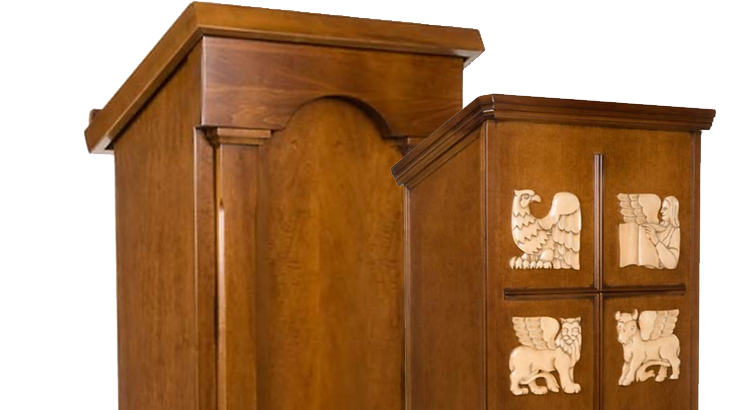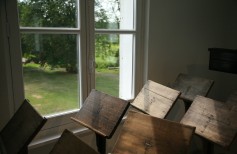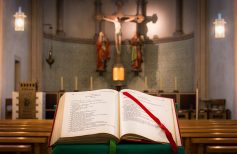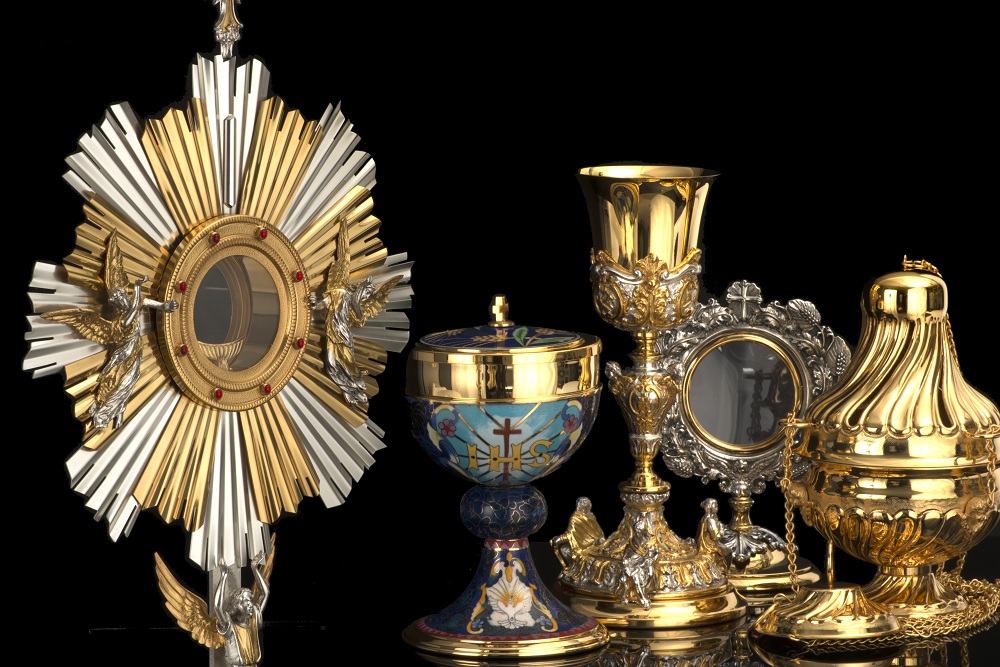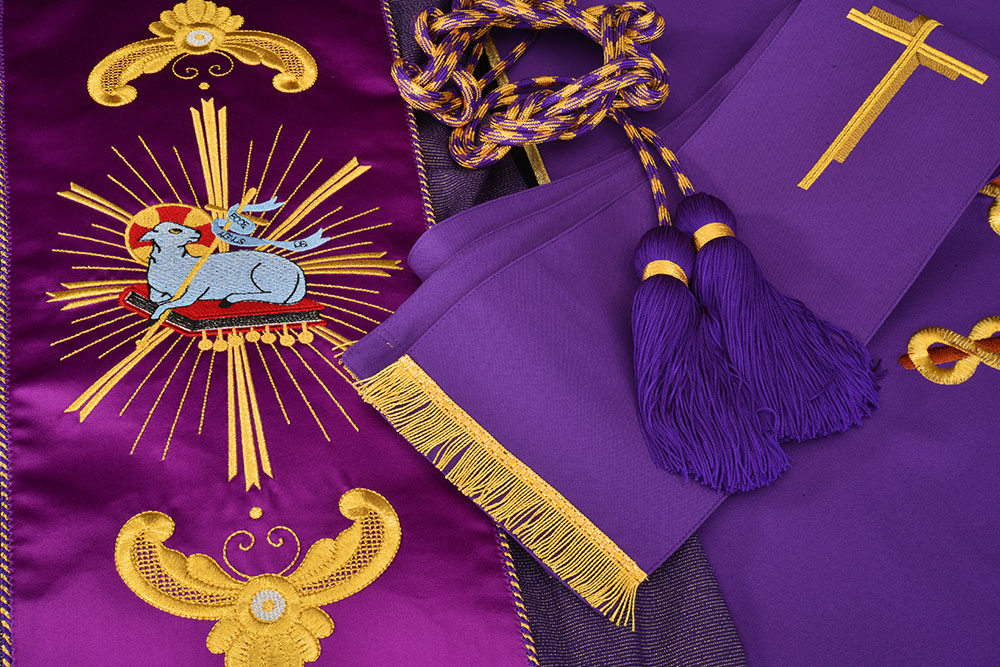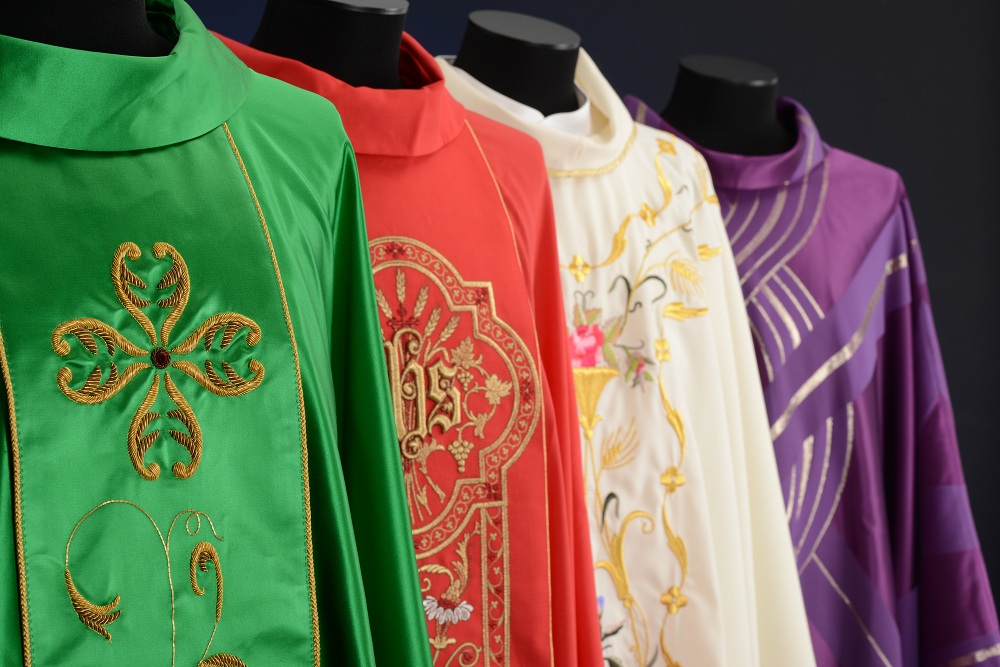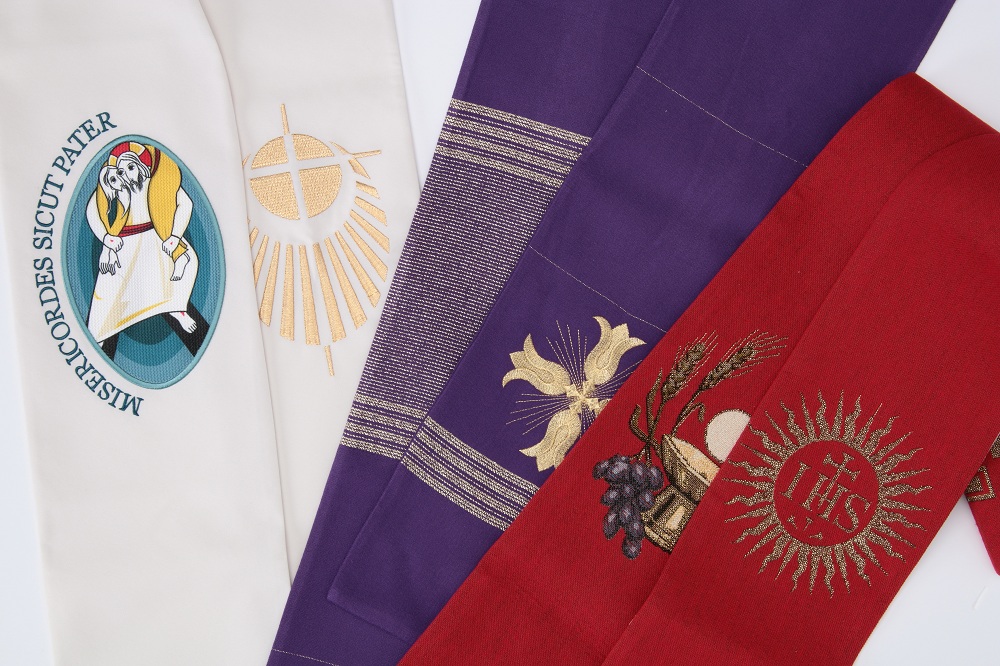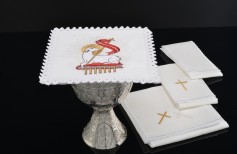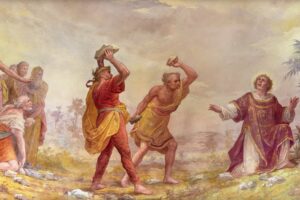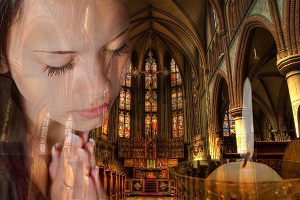Lecterns are an essential church supplies. Usually the lectern is placed before the altar, on the presbytery. Its name derives from the greek λογειον, loghĕion, “pulpit” from which it differs in some features. While the pulpit is for the preaching, the lectern serves as a support for the liturgical book during the readings.
In ancient times, it was the deacon who was holding up the book, and this happens even on the occasion of the solemn masses. In time, the lectern took place, complementing the other structures, such as the ambo.
Over the centuries, the lectern, like all other church supplies, suffered inevitable stylistic and structure changes, adapting itself to the development of the arts. Carvings, gilding and bas-reliefs transformed the lecterns in true works of art and the use of precious metals in their construction, made them objects of immense value. Often the support column was replaced with an anthropomorphic sculpture of great symbolic value.
Approaching the 19th century, even the lectern is moving towards a more sober and straightforward style, consisting of a metal column or sculpted frame (eagle with spread wings). The column can be carved, decorated with friezes and gilded, or twisted. For modern lecterns is preferred solid wood, but some lecterns are also made with different materials, such as aluminum, steel, plexiglass.
The lectern can be adjusted to suit the needs of the readers and the church that houses it.

